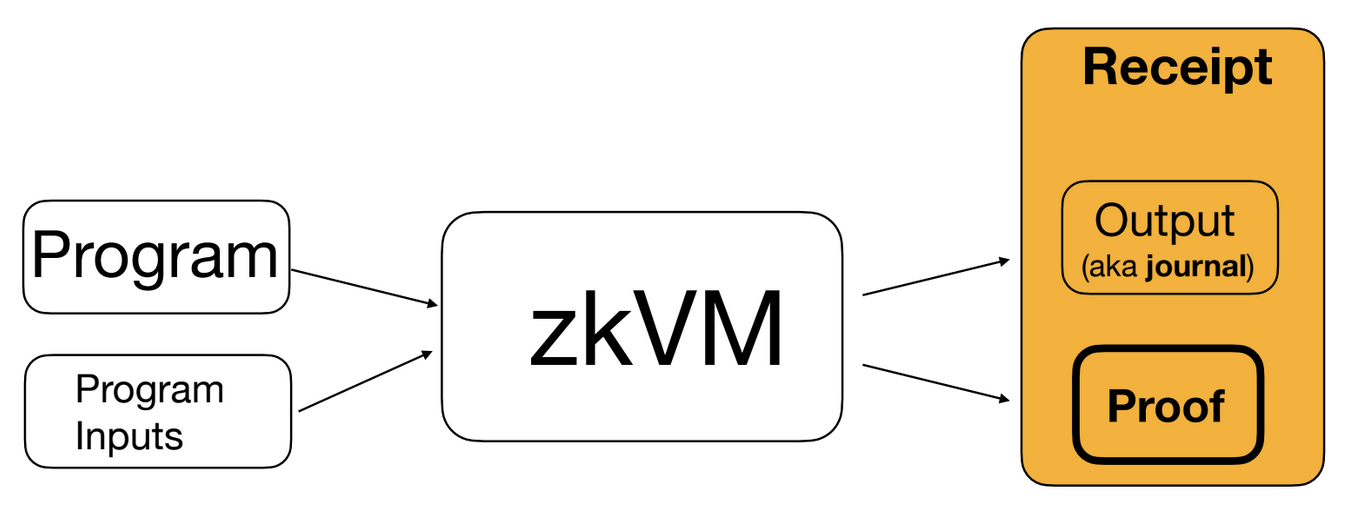Proof System Overview
 When the RISC Zero zkVM executes, it produces a Receipt that serves as a
proof of validity of a given Session.
When the RISC Zero zkVM executes, it produces a Receipt that serves as a
proof of validity of a given Session.
To confirm that a Receipt was honestly generated, use Receipt::verify().
The Receipt includes a journal, which contains the public outputs of the
Session. The contents of the journal are specified by calling
env::commit() and env::commit_slice() in the guest code.
In addition to the journal, a receipt makes a number of claims about the program execution. These claims are summarized in the ReceiptClaim.
Types of Receipts
A Receipt can take four main forms.
- A composite receipt is a vector of ZK-STARKs, one for each segment. Segments & segment proofs are constructed using the RISC-V Circuit.
- A succinct receipt is a single ZK-STARK proving an entire Session. A succinct receipt is formed by aggregating the proofs from a composite receipt. This is accomplished using the Recursion Circuit. Users can also aggregate multiple succinct receipts into a single succinct receipt using proof composition.
- A Groth16 receipt is a single Groth16 proof for an entire Session. A Groth16Receipt is formed by verifying a succinct receipt using RISC Zero's Groth16 circuit.
- A fake receipt doesn't contain any proof at all. This feature is offered to enable rapid prototyping. See dev-mode for more information.

The diagram above shows RISC Zero's full proving stack, including the RISC-V Circuit, the Recursion Circuit, and the Groth16 Circuit. In this diagram, the composite receipt is the collection of 6 stacked receipts, the succinct receipt is the single receipt after the last use of FRI, and the Groth16 Receipt is the tiny receipt that comes from the Groth16 Circuit. For a video explanation of this architecture and the associated terminology, check out our talk from zkSummit 10.
The details of the RISC Zero ZK-STARK protocol are described in our ZKP Whitepaper and in this Sequence Diagram. Documentation for our Groth16 circuit is available in the zkVM docs.
Open-Source Proving
All three of these circuits are open-source and permissionless; anyone may generate proofs on their own hardware using the implementations available at our GitHub. Users may also choose to delegate the work of proof generation to Bonsai.
Read more about our philosophy on open-source software.
Learn More
In addition to the links in the sidebar, we recommend the following resources: